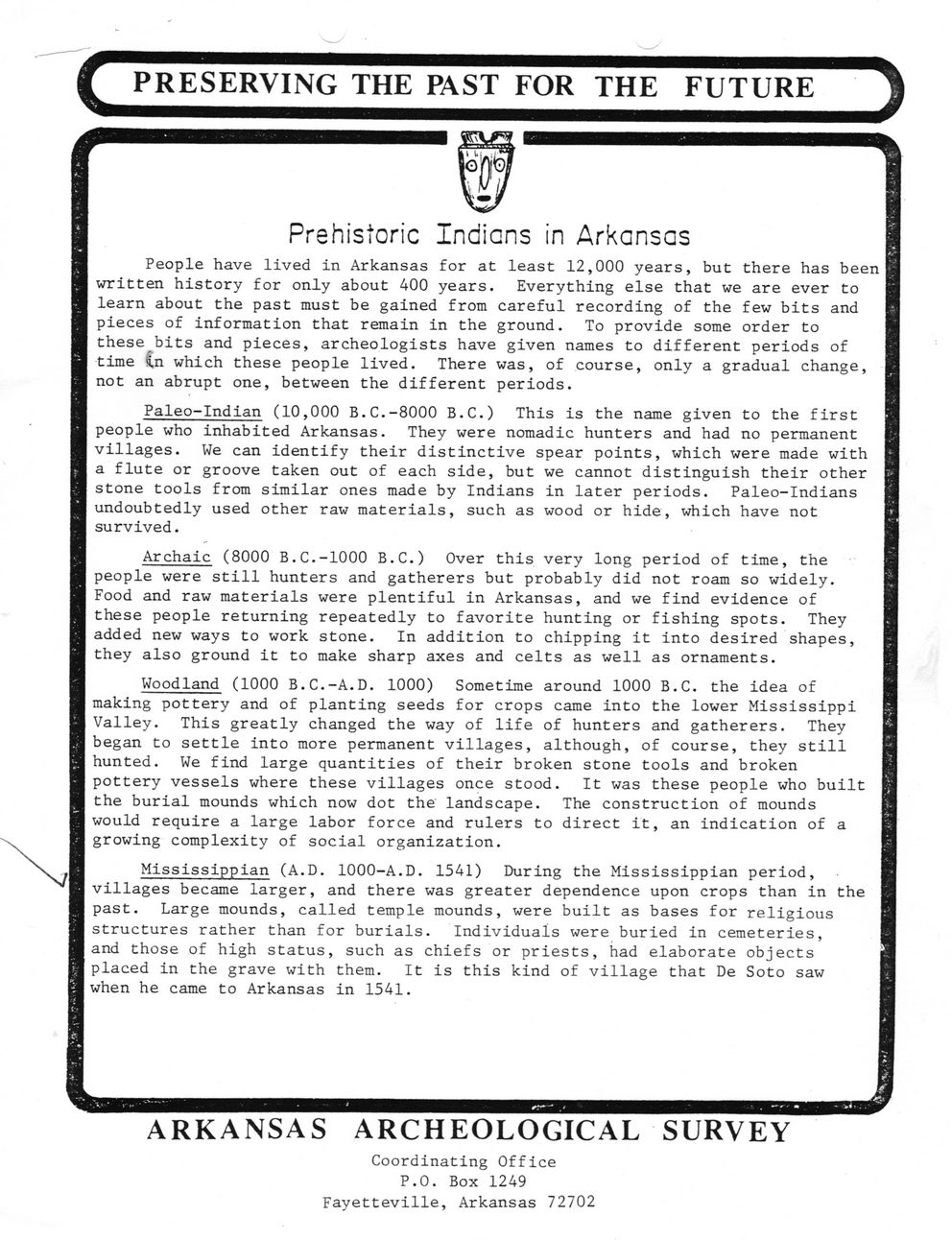This text was obtained via automated optical character recognition.
It has not been edited and may therefore contain several errors.
PRESERVING THE PAST FOR THE FUTURE People have lived in Arkansas for at least 12,000 years, but there has been written history for only about 400 years. Everything else that we are ever to learn about the past must be gained from careful recording of the few bits and pieces of information that remain in the ground. To provide some order to these bits and pieces, archeologists have given names to different periods of time £n which these people lived. There was, of course, only a gradual change, not an abrupt one, between the different periods. Paleo-Indian (10,000 B.C.-8000 B.C.) This is the name given to the first people who inhabited Arkansas. They were nomadic hunters and had no permanent villages. We can identify their distinctive spear points, which were made with a flute or groove taken out of each side, but we cannot distinguish their other stone tools from similar ones made by Indians in later periods. Paleo-Indians undoubtedly used other raw materials, such as wood or hide, which have not survived. Archaic (8000 B.C.-1000 B.C.) Over this very long period of time, the people were still hunters and gatherers but probably did not roam so widely. Food and raw materials were plentiful in Arkansas, and we find evidence of these people returning repeatedly to favorite hunting or fishing spots. They added new ways to work stone. In addition to chipping it into desired shapes, they also ground it to make sharp axes and celts as well as ornaments. Woodland (1000 B.C.-A.D. 1000) Sometime around 1000 B.C. the idea of making pottery and of planting seeds for crops came into the lower Mississippi Valley. This greatly changed the way of life of hunters and gatherers. They began to settle into more permanent villages, although, of course, they still hunted. We find large quantities of their broken stone tools and broken pottery vessels where these villages once stood. It was these people who built the burial mounds which now dot the landscape. The construction of mounds would require a large labor force and rulers to direct it, an indication of a growing complexity of social organization. Mississippian (A.D. 1000-A.D. 1541) During the Mississippian period, villages became larger, and there was greater dependence upon crops than in the past. Large mounds, called temple mounds, were built as bases for religious structures rather than for burials. Individuals were buried in cemeteries, and those of high status, such as chiefs or priests, had elaborate objects placed in the grave with them. It is this kind of village that De Soto saw when he came to Arkansas in 1541. ARKANSAS ARCHEOLOGICAL SURVEY Coordinating Office P.O. Box 1249 Fayetteville, Arkansas 72702

Native Americans AAS-Prehistoric-Indians-in-Arkansas